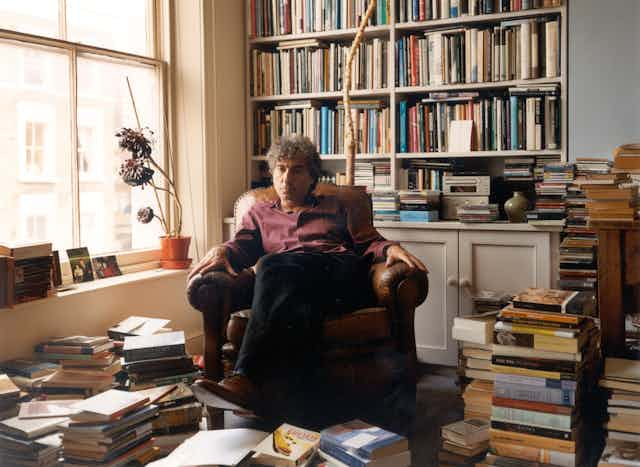It is now hard to imagine that in the middle of the last century psychoanalysis was an all-conquering cultural force. Psychoanalytic ideas were dominant in several academic fields, held in esteem by intellectuals, and well known, if notorious, among the general public. They were influential in the practice of child-rearing, education and psychiatry.
Boiled down to its essence, psychoanalysis is an approach to understanding the mind’s dynamics and treating its ailments. It maintains unconscious processes and internal conflicts shape how we think, feel and act and sexuality and early relationships are central to our development. Psychoanalytic treatment is an intensive form of psychotherapy that seeks insight into the hidden sources of our symptoms.
Read more: Explainer: what is psychoanalysis?
Six or seven decades on from its high water mark, the influence of psychoanalysis has receded. In many spheres its ideas have been superseded by other intellectual fashions, losing some of their cultural currency and recognition. In the mental health field, psychoanalysis has been overtaken by the rise of biological psychiatry and new, quicker schools of talk therapy.
Review: On Giving Up – Adam Phillips (Penguin)
But although its influence has shrunk, reports of the death of psychoanalysis are exaggerated. People continue to find value in it and to refine and mutate its theories and methods. Psychoanalysis hasn’t so much disappeared as contracted.
Although it has lost a great deal of its former prominence in the Anglophone world, psychoanalysis remains relatively vital in France and in Latin America. And although its influence in the biological, behavioural and social sciences has dwindled, it increasingly finds a home in literature and the humanities.
For example, among more than 6,000 academic subjects listed in my university’s course handbook this year, there are ten that make some reference to psychoanalysis. Almost all are in humanities fields: screen and cultural studies, gender studies, criminology, linguistics and history and philosophy of science.
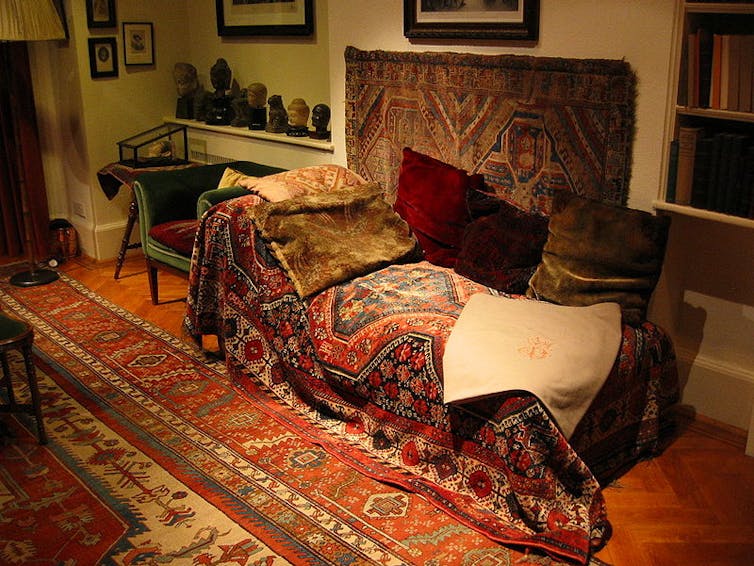
A celebrated literary figure
Psychoanalysis thrives in these fields because it offers a rich approach to interpretation, reliably unsettles common sense and asks big questions. The prolific writings of Adam Phillips epitomise this modern day humanistic expression of psychoanalytic thinking.
Phillips, who has worked for many years in England as a psychotherapist, is also a celebrated literary figure. He has received high praise as “the best living essayist writing in English”, “one of the finest prose stylists in the language” and “our greatest writer in psychology”.
The hallmark of Phillips’s work is taking an idea or phenomenon, often ordinary or obscure, and patiently investigating its hidden complexities. He has memorably turned his attention to topics as diverse as tickling, monogamy and the desire to change.
Invariably Phillips unearths layers of convolution that common sense overlooks. In true psychoanalytic fashion, what we think we want is unmasked as self-deception and what seems like pain has its pleasures. The stories we tell ourselves protect us from our fears and our adult preoccupations mask childish concerns. Everywhere the unconscious discloses itself through our conflicts and contradictions.
Read more: Bias be gone! Can our unconscious prejudices be overcome?
As a writer, Phillips clarifies these subtleties not by revealing a singular truth in an authoritative way, like a magician pulling a rabbit from a hat (“see, this is what’s really in your mind”), but by teasing the reader with a variety of possibilities and connections. Rarely does he come to a firm resolution about anything. The most the reader seeking something definite can hope for is an aphorism. Phillips dispenses these liberally, often wrapped in parentheses.
On Giving Up
On Giving Up is not, in fact, about giving up in any systematic way. That topic is the focus – perhaps the wrong word for Phillips’s habit of circumnavigating an idea rather than fixing on it – of just one of the eight essays that make up the book. Those essays have a stylistic consistency but cover a wide assortment of matters.
The lead essay inspects the many forms of giving up, from renouncing a vice to abandoning all hope. In a single paragraph illustrating Phillips’s conceptual fluency, giving up is presented as a transition, a transformation, a kind of critical moment, a prelude, a precondition, a form of anticipation, a kind of courage, a sign of the death of a desire and an attempt to make a different future.
He pithily suggests
we give things up when we believe we can change; we give up when we believe we can’t.
Not giving up is usually perceived as strong and heroic, but Phillips is alert to the “tyranny of completion” and the importance of knowing one’s limitations. Giving up can be a form of “enlightening disillusionment”; failure at one task but success at something else. Failure has its joys too, including sadistic ones. There are a few false notes: is suicide really the “only paradigm” for giving up and is it true “no one writes in praise of giving up”? The chorus of advocates for quiet quitting and work-life balance might disagree.
Read more: Quiet quitting: why doing less at work could be good for you – and your employer
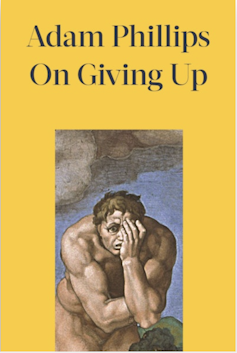
Later essays explore the sense of being alive and the complexities of wanting. Phillips presents familiarity, sameness and certainty as the enemies of aliveness and the best of psychoanalysis as an approach that revels in unfamiliarity and individuality.
Wanting is ambivalent: “there is a part of oneself that needs to know what one wants and a part of oneself that needs not to”. Knowing what we want may be overrated – evidence we have foreclosed future possibilities.
The work is studded with gnomic statements – “all our so-called diagnostic categories are, whatever else they are, descriptions of forms of not wanting” – and occasional contradictions.
On one page, “it is babies and small children who are essentialists […] what begins in adolescence […] is the more free-floating and restless wanting that I am calling a kind of anti-essentialism.” On the next, “it takes a very long time – a lot of parenting and education and more tacit acculturation – to become, to think of oneself as, an essentialist.”
Further chapters of the book explore the feeling of being excluded (including from oneself), the loss of belief in human nature or “terminal scepticism”, the idea of censorship in Freud (how we protect ourselves by repressing unpalatable truths), and “the cult of loss”. “Mourning”, Phillips suggests, “seems to be our universal religion” but it narrows out minds.
Hypnotic style
Phillips’s style throughout the book is almost effortlessly fluent and erudite. He draws insights as much from novelists and playwrights as from fellow psychoanalysts, examining works by Albert Camus, Henry James, Franz Kafka, Thomas Mann, Robert Musil, Dante Alighieri and Shakespeare. The theoretical dimension of his work musters a variety of literary critics and French writers, but always circles back to Freud and his commentators.
Read more: Guide to the Classics: Dante’s Divine Comedy
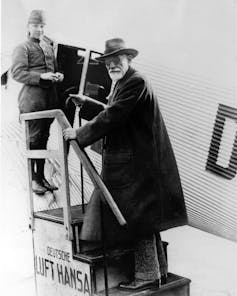
Phillips has deep expertise in the psychoanalytic canon – he is general editor of Penguin Modern Classic translations of Freud’s work. He always gives Freud a sympathetic and almost deferential hearing, only showing the slightest unease when mentioning Freud’s abandonment of the so-called “seduction theory”, according to which hysteria was caused by childhood sexual abuse. For psychoanalytic aficionados, he is especially drawn to the British and French mystics: Wilfred Bion, Jacques Lacan and D.W. Winnicott.
As psychoanalytic writing goes, On Giving Up is refreshingly free of dogmatism, pomposity or jargon. The occasional “super-ego” and “ego-ideal” pops up, but otherwise Phillips uses ordinary language to defamiliarise ordinary ideas. At times this can be genuinely illuminating but at others it has the effect of creating a feeling of slipperiness, as if the same passage must be read and re-read to grasp some elusive meaning.
Part of the challenge of finding solid ground in Phillips’s work is the lack of recognisable landmarks. In the process of dissecting how people think and feel, this book contains no mention of current affairs – aside from a glancing reference to Queen Elizabeth’s death. There are no technologies, no politics – aside from some abstract links drawn between fascism and the seeking of similarities – no scientific findings or opinion polls, nothing about brains or biology, very few geographical locations.
It is a book of ideas, experiences and other books that largely floats free of the everyday public world as we know it.
After a while, despite the simple words and the smooth sentences, the experience becomes hypnotic. The reader can feel like a dull stone in a creek bed, the writing flowing clearly and sometimes sparklingly overhead. How much is learned often remains unclear. The reader may have the experience of being in the presence of a profound thinker, and of being made to think differently, but still be unsure of what they have learned.
There is never anything as crass as a take home message in Phillips’s essays and sometimes they leave no residue beside the recollection of having being led on an interesting journey.
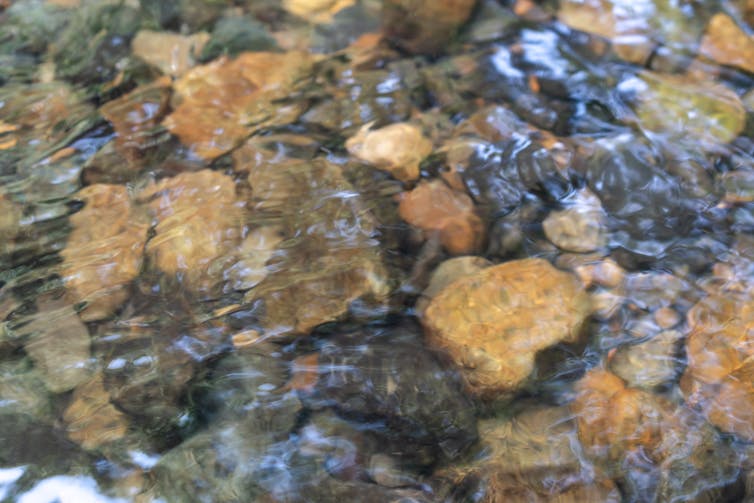
Curiosity versus knowledge
Clues to why Phillips’s work is so clever and thoughtful in the reading but also so insubstantial in what it leaves behind can be found in two ideas he presents at each end of the book. In the prologue he cites with approval the psychoanalyst Marion Milner’s distinction between narrow and wide attention and near the conclusion he develops a distinction between curiosity and knowledge.
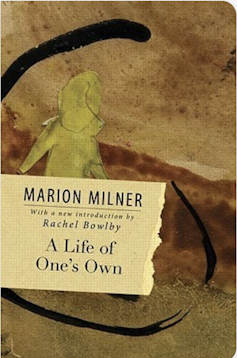
To Milner, narrow attention is a “questing beast” that heeds what suits its current interests and pragmatic purposes, like a dog following a scent, ignoring everything else.
As Phillips presents it, this mode of attention is “the project of somebody who apparently knows what she wants”. In contrast, wide attention occurs “when questing purposes were held in leash”. Wanting nothing in the moment, attention can be directed to the whole rather than focused on selected parts.
Phillips makes no secret of his preferences.
Wide Attention re-enchants the world, Narrow Attention can diminish it.
Whereas narrow attention limits people, wide attention opens new vistas, allows people to explore and to straddle contradictions and is “non-predatory”. Wide attention is offered up as something more elevated and less bestial than its alternative. Whereas Milner argues both forms of attention are needed, Phillips’s writing is an unrelenting exercise in wideness.
This way of perceiving is closely aligned with the “evenly hovering attention” Freud advised practising psychoanalysts to adopt, free of preconceptions or aims.
Read more: A dangerous method? In defence of Freud's psychoanalysis
Readers of Phillips who are analysts may find his essays resonating with their clinical experience and literary critics seeking new insights into a particular work rather than building a grand theory may feel the same. But many readers with other backgrounds will wish for more narrow attention to complement the wide, so a few positive claims about mind, culture or society can be proposed, developed and justified.
A related issue arises when Phillips draws a distinction between curiosity and knowledge. Psychoanalysis, he writes,
has been divided over whether it is a curiosity profession or a knowledge profession, whether it is more essentially about cure or exploration; the curious, the explorers, can never settle; those who are keen on being knowledgeable and helping people want to settle when it is at all possible.
It is again hard to miss which vision of psychoanalysis Phillips favours. To be keen on being knowledgeable sounds a little pompous and to want to settle rather than explore sounds more than a little pedestrian and perhaps lazy. A true psychoanalyst, after all, “is someone who is, above all, curious about curiosity.”
It is hard to argue against the value of curiosity, but to place it in opposition to knowledge is odd. Normally, we might think curiosity drives us towards knowledge and knowledge rewards and reinforces curiosity rather than dulling it. New knowledge is always provisional and always raises new questions. But for Phillips, “[b]elief without curiosity is stultifying. And that may be its point.”
Earlier, in his essay on the sense of aliveness, he makes a similar point:
If we have become […] great familiarizers and generalizers, we have been actively and determinedly narrowing our minds.
Claims to knowledge and attempts to infer the general from the particular suppress rather than stimulate our desire to know more.
It is not obvious why psychoanalysis or any other approach to studying the mind could not aspire to be both a form of (widening) curiosity and a form of (narrowing) knowledge. There is nothing incompatible about exploring new possibilities and also drawing generalisations and trying to make the unfamiliar familiar. But in Phillips’s work we see a highly developed psychoanalytic curiosity that abstains from making clear knowledge claims.
That approach may appeal to the more literary forms of psychoanalytic thinking but is likely to leave many other readers, including those with clinical or psychological interests who might otherwise be sympathetic, feeling something important is missing.
Psychology versus psychoanalysis
The commitment to pure exploration is why Phillips, though a great writer, is not “our greatest writer in psychology”. I’m sure he would agree what he is doing is not psychology in the usual senses. Psychoanalysis of Phillips’s variety doesn’t aspire to be any kind of science and it sets itself up as a radically different approach to the study of mind and behaviour. The reluctance to draw simplifying generalisations from the complexities of experience is part and parcel of that difference.
A psychology of giving up, for example, would be less astute in unravelling the inner complexities of self-sacrifice and renunciation than Phillips’s psychoanalytic account. But it would also be more willing to put forward (tentative) knowledge claims and seek (fallible) evidence in support of them.
It might refer to research on delay of gratification and the benefits of persistence. It might discuss the Zeigarnik effect, our enhanced recall of incomplete or interrupted tasks and what it implies about the felt need to finish what one has started.
It might present the sunk cost fallacy (how a sense of having invested in a desired outcome leads us to throw good money, effort and time after bad) as an explanation for irrational failures to give up, or demonstrate how goals to avoid failure can get in the way of knowing when to hold and when to fold.
Read more: What is the 'sunk cost fallacy'? Is it ever a good thing?
It might address the copious psychological literature on hopelessness and suicide and on the challenges of helping people give up their bad habits.
Such an approach is not inherently preferable to Phillips’s form of psychoanalysis, but it is decidedly different, and not because it is deficient in curiosity.
Readers with an interest in the human mind can profit from an immersion in On Giving Up, but unless they are already devotees of the genre they are likely to come away feeling that by foregoing claims to knowledge it is giving up something important.

